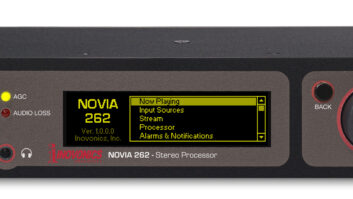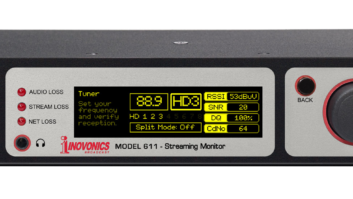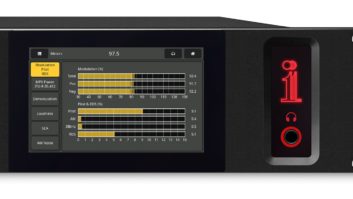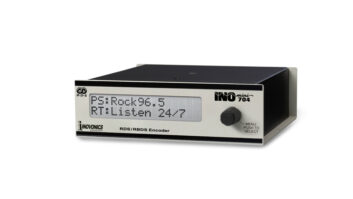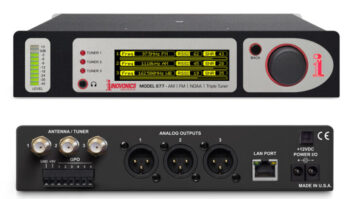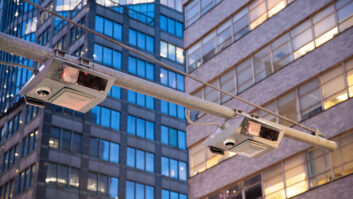While upgrading your station’s Emergency Alert System receiver may not be at the top of the GM’s to-do list this year, having clean audio and reliable reception of EAS sources is not only good for your listeners but is also required by the FCC. Unfortunately, the availability of broadcast-quality EAS receivers has dwindled over the past few years, leaving a sizable hole in the market. However, that just changed with the new 677 Triple Tuner from Inovonics.

Released in December 2023, the 677 combines three discrete AM/FM/NOAA receivers into a sleek 1RU, half-rack unit. Designed primarily for the reception of EAS Local Primary (LP) stations, the 677 is the ideal upgrade to the outdated or obsolete receivers installed in racks today.
The Inovonics 677 is equipped with three tuners, each capable of receiving AM, FM or NOAA weather channels, so configuring it to match your local EAS plan takes just a few mouse clicks. Of note for certain areas: The 677 is not able to receive other VHF/UHF frequencies or DTV audio.
On the rear panel you will find three separate 75-ohm F-type jacks, so it is easy to use multiple antennas or share one with a splitter.
The audio for each tuner is brought out to its own balanced analog-mono (L+R summed) XLR male jack. There are six configurable GPO closures for alarms and an RJ-45 network port for remote access. The unit even includes an extra power port if you wish to add a redundant 12VDC power supply. The simplicity makes physical installation quick and efficient, and I was delighted to finally do away with the terminal block audio connections on the old receiver I decommissioned in the process.
The front offers an orange LED display that is easy to read and navigate, three red indicators for active alarms, an audio meter for the selected receiver, and a 1/8-inch headphone jack.
The default display provides a summary with band, frequency, signal strength and audio activity of all three tuners. Configuration of the receivers’ frequencies, audio output levels, GPO triggers and IP address can be accomplished through the front panel, while more advanced features are setup via the web interface.
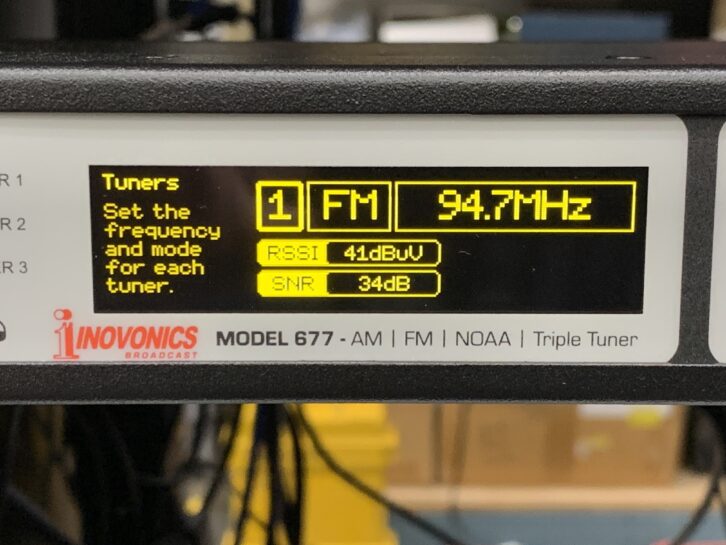
As internet connectivity of some variety moves toward being standard at broadcast facilities, having every device in the rack capable of remote access is a must. The 677 is equipped with the same rich, responsive web interface we see on other modern Inovonics models.
Navigation through the menu structure is simple and intuitive, so much so that one can set up and install this device without ever opening the plastic wrap on the user manual.
While the 677 can certainly be a “set it and forget it” EAS receiver, the web interface provides a lot of data to the station engineer through both desktop and mobile browsers. Details on each receiver’s performance are available at a glance on the home page, and histograms are offered to help fine-tune reception and troubleshoot issues.
The unit can provide an Icecast or UDP stream of any one of the tuners (selectable through the web interface) for instant or continuous remote monitoring on an internet radio, such as the Inovonics 611, or any web browser. The stream audio is encoded using HE-AACv2 and has a user-selectable range from 18 kbps to 64 kbps, so it is bandwidth-friendly even on cellular and VSAT connections.
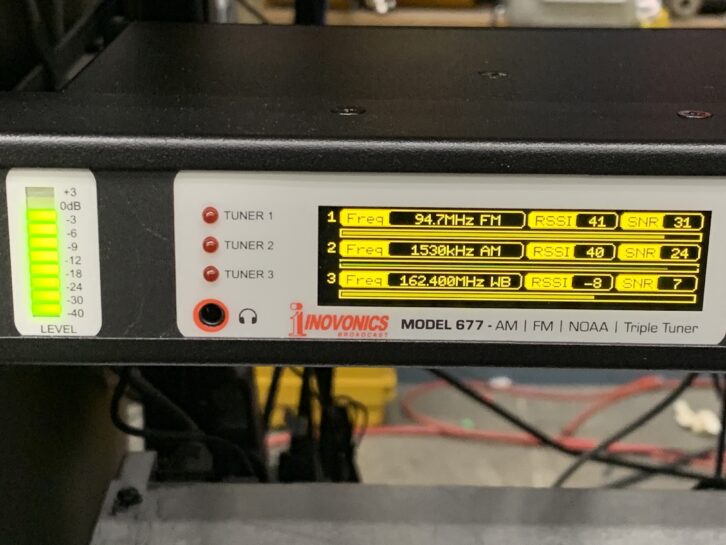
One thing missing from the 677’s streaming options, which is found on other Inovonics receivers such as the 568 Sophia, is the ability to push audio to Dante and AES67 devices. While the absence of this feature certainly reduces the cost of the unit and is perhaps not a broad need at this point, as more air chain devices are virtualized and with the hope of a virtual EAS encoder/decoder down the road, the ability to have all rack audio in an AoIP environment is a big plus for broadcasters.
The most important feature of any radio is its reception quality. With modern software-defined radios (SDRs) it is not uncommon to get excellent signal-to-noise ratios and rejection even in difficult environments. Even so, the 677 outshines its competitors in this area.
For initial testing on the bench, I used an outdoor discone antenna with about 75 feet of RG-6 coax feeding an inexpensive three-way splitter to provide an RF source for each receiver input. I purposely tuned the 677’s receivers to distant AM, FM and NOAA weather stations. For comparison, I had an identical setup on the bench with another popular EAS receiver. To say the results were impressive would be an understatement.
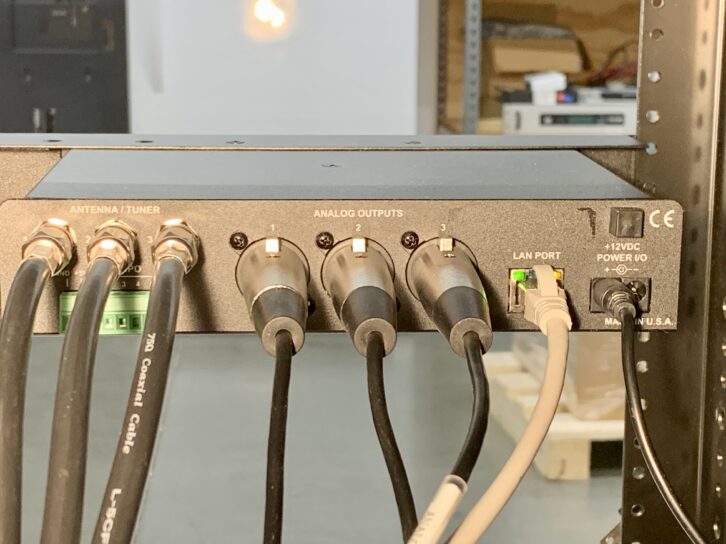
The 677 was able to provide reasonably good audio on a weather station with an indicated RSSI of 2 dB. The competitor’s receiver returned only static. AM and FM performance was similar, where weak signals were received with acceptable noise for this application. Our Sage Endec easily decoded alerts from these sources during the course of a couple of weeks of testing.
Under the category of “why not,” I slid a paper clip into one of the F-type antenna jacks and tuned a local FM station. I was greeted with full-quieting audio and an indicated RSSI of 31dB. And similarly, with the same paper clip, I was able to pick up a 5 kW AM station about 10 miles away with only some light crackle and hum — satisfactory for EAS reception. Simply stated: If you have a site where reliably receiving your assigned LP is challenging, the 677 may be your solution.
Another unique and notable feature of the 677 is that it can trigger a GPO, SNMP or email notification when EAS tones are received on any of the monitored sources. This is especially helpful when tracking down a missed alert or simply verifying the Endec is configured properly. If you only have two LP sources to monitor, consider using the third tuner to monitor your own station to validate that your alerts are being transmitted.
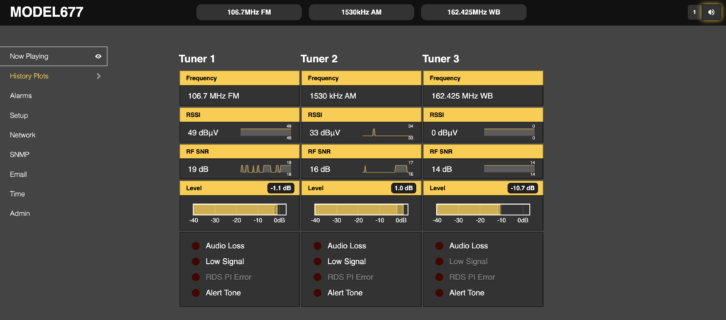
The 677 includes SNMP, which can be easily interfaced to a modern station remote control, allowing a centralized location for alarm captures and logging. It can also send customized email notifications to up to 10 recipients. An alarm for RDS PI Code Error is included, the idea being a means to verify that the source you are supposed to be receiving is what you are receiving. The received PI code is viewable only in the alarm configuration, but no other RDS data is brought out to the web UI or front-panel interface. While not required, the ability to see FM RDS data would be a nice touch to this otherwise novel feature.
Can the 677 Triple Tuner be used for more than just an EAS audio receiver? Absolutely. If you have a couple of signals to keep tabs on while working in the engineering office, the 677 provides a simple way to monitor three stations at once. The individual audio outputs could easily be interfaced to a speaker switch and the mono output works great for a single Fostex 6310B sitting on the workbench. And with the built-in streaming and comprehensive alarm capabilities, using the 677 as a remotely steerable multiband radio could make sense when your stations are a long way from home.
Overall, the 677 Triple Tuner is a fantastic little box that reveals how Inovonics continues to listen to and support the needs of the industry. Simple, easy to use and packed with a host of powerful features to help ensure your EAS reception is the best it can be, the 677 will make a great addition to your station rack.
[Check Out More Product Evaluations in Our Products Section]





